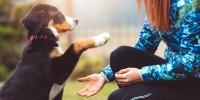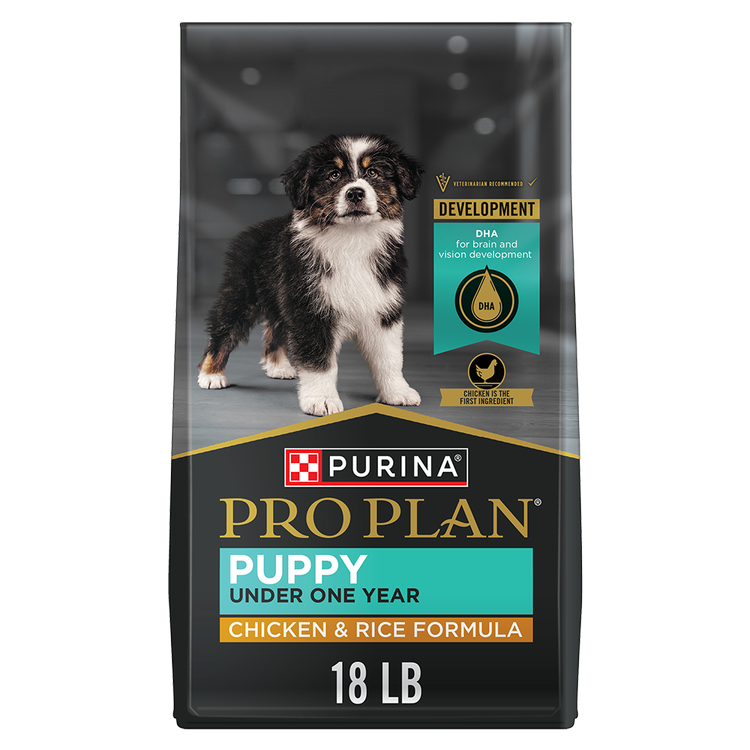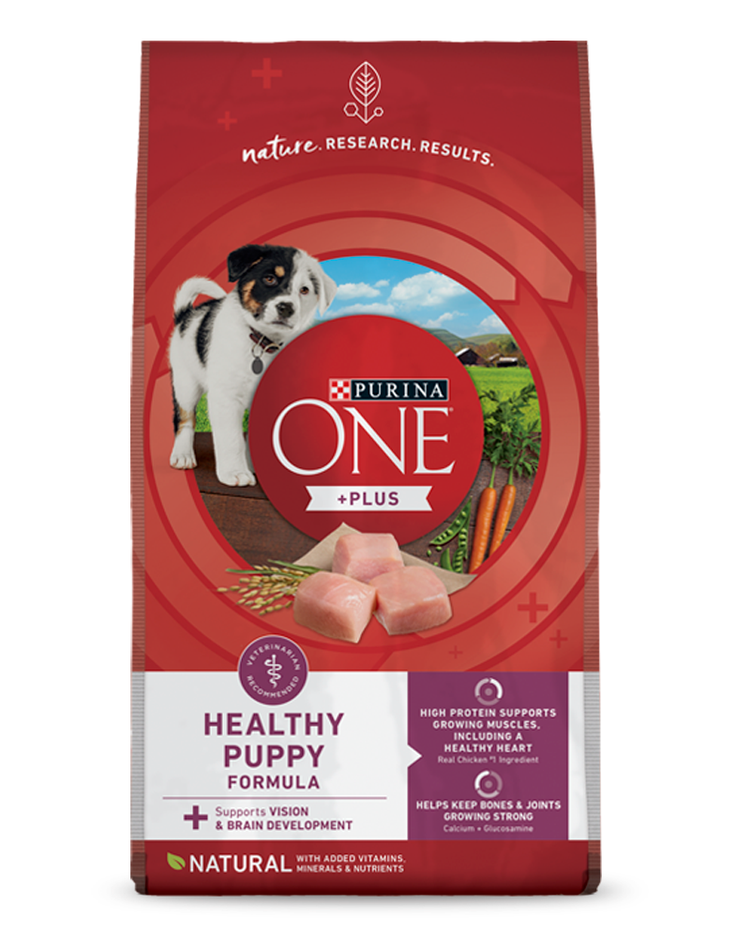The Importance of an Age-Appropriate Puppy Training Schedule


A new puppy can be one of the most enjoyable and exciting moments for any family. Looking into those sweet little eyes and at that cute little face can make anyone fall in love and want the best for their adorable ball of fur. That is why it is essential to ensure that when it comes to creating an environment where your puppy can thrive in establishing an age-appropriate puppy training schedule is key.
Why Do I Need a Training Schedule for My Puppy?
Just like how schedules help kids understand the world around them and make them feel more secure in their environment, the same is true for puppies. In turn, a productive puppy schedule will increase their confidence and self-esteem while speeding up their training on teaching them how to be a well-behaved member of the family and society.
What Are Some Best Practices I Can Use to Train My Puppy?
Positive reinforcement and consistency are considered some of the best techniques to use in puppy training according to our Purina experts. Not only will this create a stronger bond between you and your new pup, but it is also healthier for their overall development and mental well-being. By staying on top of your puppy’s positive reinforcement training, they will be able to create positive associations with the behaviors you want them to achieve in a fun and safe way.
Positive reinforcement can be done in many ways, including treats, toys, praise, positive attention and anything else your puppy might love. The more positive interactions you give to your puppy when they engage in behavior you want to see, the faster they will be able to meet their training goals and the happier everyone will be in the long run.
To learn more, please visit our article about 5 Tips For How To Train A Puppy.
When to Start Training Your Puppy
You can start training your puppy the moment they enter your life. However, the best age to begin puppy training is 0 to 8 weeks. That is because this is the time when your puppy’s development is at its most flexible and impressionable phase. This is the period when your puppy’s brain is undergoing massive developmental changes as their personality starts to set. In turn, 0 to 8 weeks is usually when socialization training becomes a crucial step in regard to teaching them how to interact with other humans and animals. The best part is their mom and littermates will assist you in their socialization training as they are the first animals that your pup will interact with.
The socialization period for a puppy is from 3 to 12 weeks. Through socialization training during their first 3 months, puppies begin to learn more about the world around them, become familiarized with humans, discover how to play with others, understand good social interactions, pick up self-discipline skills and more. Once they start to get the hang of these skillsets, training them in other areas will become easier as they continue to grow.
Puppy Training Schedule By Age
Understanding your puppy’s training needs at each phase of their life will help you to create a better bond with your new family member while teaching them necessary skillsets in a way that makes the most sense to them. Below is a complete puppy training schedule by age that provides an overview of several types of training according to their age.
| Age | Potty Training | Life Skills & Obedience Training | Socialization Training | Sleep Training | Crate Training | Leash Training |
|---|---|---|---|---|---|---|
| 0-8 Weeks | Puppies are learning bladder control. They can only hold their bladder for about 1 hour during this age. | During a puppy’s first few weeks, focus on helping them become familiar with their environment, other animals and humans. This will set them up to succeed in future training sessions. | This is one of the most important times for your puppy to learn appropriate social skills. During this age, they will learn how to interact with other animals and humans. They will also learn skills, such as play, bite inhibition, self-discipline and more. | A new puppy will sleep about 16-20 hours a day. This is to help their overall development physically, mentally and emotionally. Let them spend most of their day sleeping during this time. | Begin to familiarize your puppy with the crate in a stress free and positive way. Remember that puppies at this age will need to go potty about every hour, so do not leave them in the crate for too long. | As your pup develops, this is a good time to get them familiar with being around collars and leashes. |
| 8-16 Weeks | Take them out every 2-4 hours during the day and every 5-8 hours at night. This is the time to start teaching them where to go potty. | This is the perfect age to start teaching your puppy appropriate training cues and life skills that they will need to thrive in our world. They will begin to understand basic commands and expectations. | This is when they begin to understand normal doggy behavior and the set boundaries expected of them. Continue to instill these in your pup using positive reinforcement training. | As your puppy gets older, they will start sleeping less. Making sure to add plenty of naptimes to a puppy’s schedule will accustom your puppy to sleep at appropriate times. | Begin to teach your puppy crate training cues and commands using treats, praise and other forms of positive reinforcement. | This is the prime age to begin leash training. During this life phase, your puppy will be able to start learning simple training cues, such as the “sit” command, making leash training easier for everyone. |
| 4-6 Months | Take puppies out every 4-5 hours. Most puppies can make it through the night at this age. | This is the beginning of the “adolescent years,” and your puppy might start acting a bit rebellious around this time. Continue to stay on a consistent routine and schedule while reinforcing any prior training and skillsets in a positive way. | By now your pup should have better interactions with others and understand a few basic commands. They should also have made progress on housetraining skills and practicing good manners. | By now, your puppy will have more energy and their playfulness will increase. They will need less naps throughout the day, which will make more time for you to bond with your buddy. | Gradually increase their crate time but do not exceed 8 hours. If a puppy or dog is in a crate for long stretches of time regularly, this will be detrimental to their physical and mental health. | Your puppy will begin to get more familiarized with what is expected in their leash training and on walks. They will pick up training cues faster and be able to learn more commands. |
| 6-12+ Months | Puppies can start getting by with 3-4 potty trips throughout the day. | As your puppy comes into their “teen years,” they will begin to develop more independence and become more mature. They also will get easily distracted during this time and might forget some of their training. When this happens, remind them of their training through positive reinforcement techniques. | Your puppy will start to pick up more cues and get better at learning what is expected of them. Continue to positively reinforce any behaviors you want them to keep. | This is when your puppy will go through an intense boost of energy and will need more playtime with less sleep. As they continue to grow into their adulthood, a puppy will gain more control over their own sleep habits making less work for you. | By now, your puppy should have a better idea of what time they will be in the crate and what is expected of them while they are in there. Continue to reinforce any training cues in a positive way and do not forget to take them out for potty breaks and lots of exercise. | Your puppy should have most of their leash training down by now but will become easily distracted around this age as they increase in their energy levels. They will need to be positively reinforced on specific cues and commands sometimes. |
Puppy Training Schedule Example
The following puppy training schedule is only one example of how you can plan your daily 8-week-old puppy training activities. This schedule might need to be adjusted as your puppy grows older and starts to pick up main commands and expected routines. Each day will be different according to how the puppy responds to various stimuli, however, encouraging your puppy to stay on a planned schedule will help maintain consistency and improve your puppy’s confidence over time.
| Time | Activity |
|---|---|
| 5-7 am | Potty time! Take your puppy out to see if they need to go to the bathroom, then see if your puppy wants to go to sleep again. If not, feed your puppy breakfast and get your day started. |
| 7 am | Start the day off by playing with your puppy and using lots of positive reinforcement throughout the day. |
| 7:30 am | See if your puppy needs to go to the bathroom and, if not, then start incorporating some training into playtime. |
| 8 am | Potty time! |
| 8:30 am | Go for a walk and practice leash training. |
| 9 am | Naptime. |
| 10 am | Wake up and potty time! |
| 10:30 am | Playtime and training. |
| 11 am | Focus on life skills and obedience training. |
| 11:30 am | Feed your puppy lunch before their nap. |
| 12 pm | Potty time! |
| 1 pm | Naptime. |
| 1:30 pm | Go for a walk and practice leash training. |
| 2 pm | Playtime and training. |
| 2:30 pm | Incorporate some socialization training and exercises. |
| 3 pm | Feed your puppy a late afternoon meal. |
| 3:30 pm | Potty time! |
| 4 pm | Focus on life skills and obedience training. |
| 5 pm | Naptime. |
| 5:30 pm | Go for a walk and practice leash training. |
| 6 pm | Feed your puppy dinner. |
| 6:30 pm | Potty time! Then playtime and training. |
| 7 pm | Focus on life skills and obedience training. |
| 7:30 pm | Incorporate some socialization training and exercises. |
| 8 pm | Potty time! This is the time to start relaxing as the two of you get ready for bed. You can also incorporate some crate training with a chew toy to help your puppy relax. |
| 10-11 pm | Potty time! After you take your puppy out one more time, finish winding down and go to bed. |
| 3 am | Potty time! Wake up during the night to see if your puppy needs to go out. This is only temporary until your puppy gets better at bladder control throughout the night. |
| 5-7 am | Start all over again. |
How Long Does it Take to Train a Puppy?
Every puppy is different, and each form of training will require various components to ensure your pup gets trained effectively and quickly. Most training does not happen overnight and can take several months to achieve. Furthermore, some forms of training can be started right away, while other forms of training are better to start at later ages. Generally, puppies will begin to pick up most of their training within the first year of their life and development.
What Types of Training Should I Do With My Puppy?
There are many forms of training to get your pup prepared for the world, however, most puppies usually need the following types of training:
- Potty Training
- Life Skills and Obedience Training
- Socialization Training
- Sleep Training
- Crate Training
- Leash Training
Each one of these types of training has specific purposes that will help set boundaries and establish clear guidelines that will teach your puppy what is expected of them. For more information, you can consult our Purina puppy training and dog training pages.
Why We Need Age-Appropriate Puppy Training
Understanding the needs of your puppy at each phase of their life will help you create appropriate training schedules, puppy routines and activities as they grow into their adulthood. Knowing when to start which training is an essential step for the highest chance of success. This will allow you to learn more about your puppy and develop a closer bond with them.
For more expert tips on training, explore our other puppy training articles.

Be Rewarded for Your Purina Purchases
Earn and redeem points for Purina products with myPurina app.






